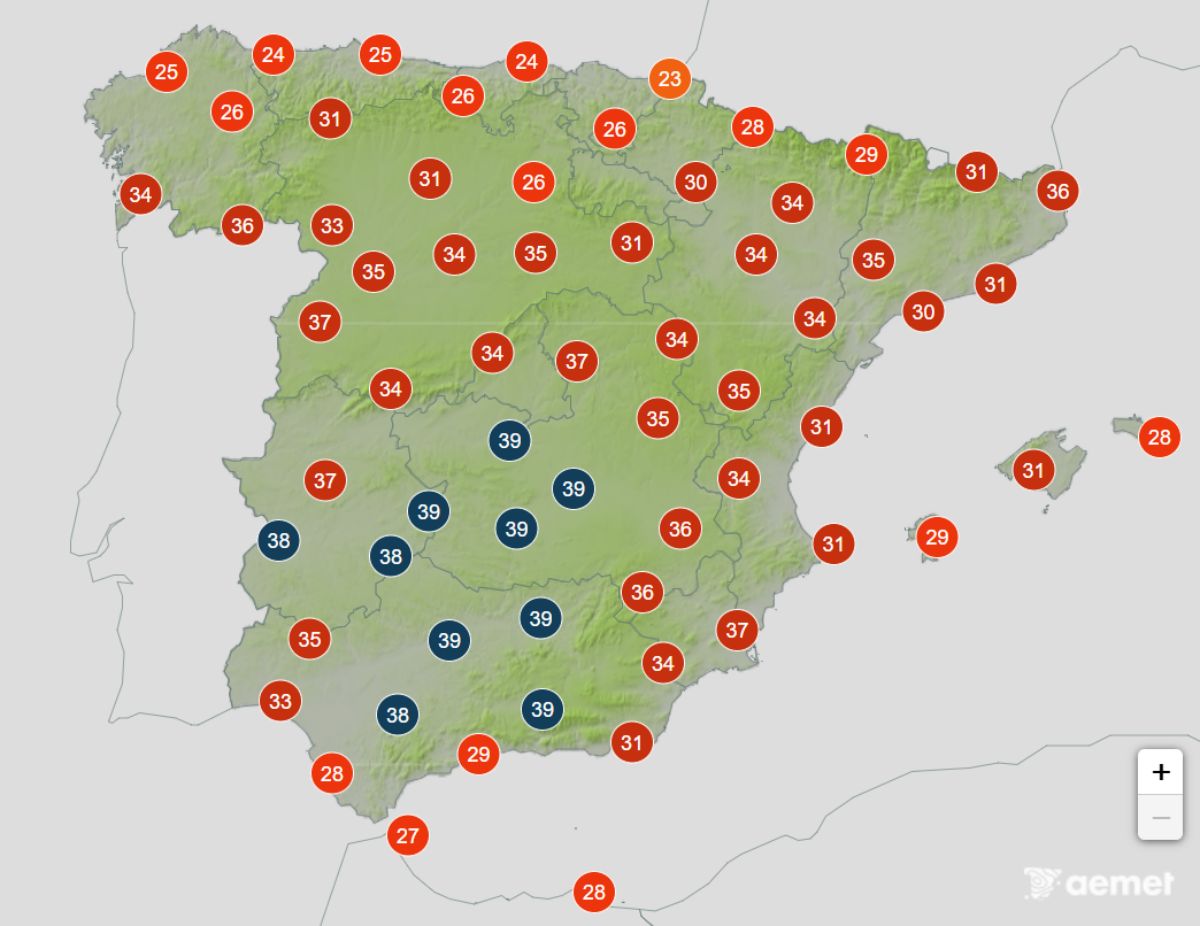Spain's second summer heatwave: What you need to know

It's official, the second heatwave of the summer has already begun in Spain. How hot will it actually get, which parts will be most affected and how long will this 'ola de calor' last?
Spain’s first heatwave of the summer hit early this year in June, but after a surprisingly 'mild' July in much of the country, a second heatwave is on the horizon and the country is starting to sizzle once again.
Spain’s State Meteorological Agency Aemet has confirmed that the heatwave officially began on Sunday August 3rd and is expected to continue until Saturday August 9th.
In practice, temperatures could be up to 12C above normal for this time of year in Spain.
Five regions - Andalusia, Castilla-La Mancha, Extremadura, Galicia and Madrid - have an orange weather alert while seven others - Aragón, Cantabria, Castilla y León, Catalonia, Navarre, the Basque Country and La Rioja - have a yellow alert issued by national weather agency Aemet.
READ ALSO: What do Spain's orange and red weather alerts mean for the public?
So if in the coming days you're going to be in either Huelva, Córdoba, Granada, Jaén, Seville, Huesca, Zaragoza, Badajoz, Cáceres, Ávila, Burgos, León, Palencia, Salamanca, Segovia, Soria, Valladolid, Zamora, Albacete, Cuenca, Guadalajara, Toledo, Ciudad Real, Lleida, A Coruña, Lugo, Ourense, Pontevedra, Madrid or Logroño, you can expect outdoors to feel a bit like an oven.
In fact, on Monday August 4th, the mercury had already exceeded 40-42C in regions of the southwest of the country and even reached 43.5C in Badajoz in Extremadura region.
A total of 34 out of Spain's 50 provinces have heat warnings in place.
The maximum health caution has been issued in more than 1,300 municipalities across Spain.
READ ALSO: The official dos and don'ts to survive the summer heat in Spain
According to the latest data from Spain's Ministry of Health, 16 percent (1,316 municipalities) are currently at a high health risk level, while 27 percent are at a medium level (2,200), and 34 percent (2,736) are at a low risk.

Temperatures are expected to increase throughout this week, reaching up to between 40 and 42C in many areas of Spain. Experts say this is due to high pressure in the Atlantic combined with the low pressure in the southwest of creating a so-called “corridor” through which hot, dry air from Africa will travel through Spain.
Temperatures of more than 40C are expected in the valleys of the Guadiana, Guadalquivir, and Tagus Rivers. This includes areas such as Extremadura, western inland Andalusia like Córdoba and Seville, as well as much of central Spain.
READ ALSO: Ceiling fan vs air con in Spain: Which offers the better price-coolness ratio?
These, however, will not be the only areas affected. The northern regions will also experience a significant rise and scorching temperatures.
In Galicia for example, it is expected to exceed 38C, and from Monday August 4th the heat will rise along the Cantabrian coast and inland in the region.
Other areas that will be affected more than others will be the interior of the Balearic Islands.
The sweltering weather will continue to affect the peninsula on Tuesday August 5th and Wednesday 6th.
Northern Spain will experience a drop in temperatures by Thursday, but the intense heat will continue in the west of the country and temperatures will start to creep up around northeast Spain.
Escape the heat: 8 places in Spain where it doesn't get too hot in summer
Much of Spain will also experience tropical nights where the temperature does not drop below 20C. In fact, for some places in the south of the country, it will be between 23-25C at night.
Eastern Spain will also see a slight increase in temperatures, although not as much as the rest of the country.
The only region that won't experience this ola de calor (heatwave) is the Canary Islands, which will only see a moderate rise in temperatures between Monday August 4th and Wednesday August 6th.
Although the heatwave should subside by the weekend, the week starting on August 11th will still see hot weather continue to be predominant the country, with particularly hot temperatures forecast in the northern and northeastern inland areas.
According to meteorologists from El Tiempo.es, warmer than normal weather is expected to continue through to the end of the month.
Please, login for more
thelocal





